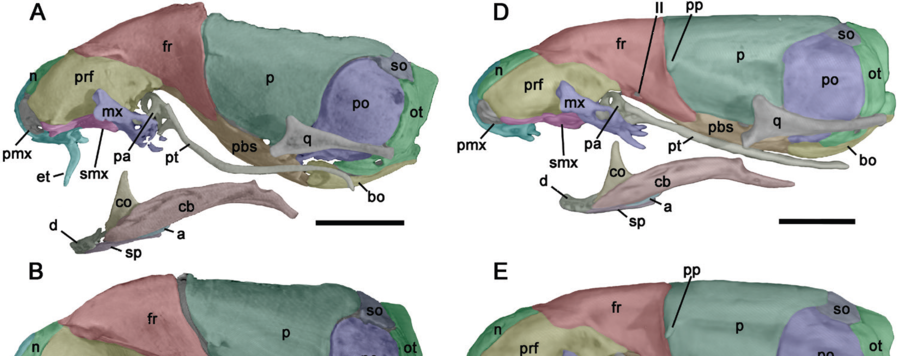
Ontogeny of the skull of the blind snake Amerotyphlops brongersmianus (Serpentes: Typhlopidae) brings new insights on snake cranial evolution
Blind snakes represent the most basal group of extant snakes and include fossorial species with unusual skeletal traits. Despite their known phylogenetic position, little is known about their ontogeny and what it might reveal about the origin of their skull anatomy. Here we describe for the first time the ontogenetic transformations of the skull of a blind snake, the typhlopid Amerotyphlops brongersmianus, including embryos and postnatal individuals. Furthermore, we provide data on the size changes relative to skull growth of the main elements of the gnathic ,complex. We observed that the skull of this blind snake undergoes considerable morphological change during late
ontogeny. Additionally, we detected delayed development of some traits (closure of the skull roof, opisthotic-exoccipital suture, ossification of the posterior trabeculae) simultaneously with clearly peramorphic traits (development of the crista circumfenestralis, growth of the pterygoid bar). Our analysis suggests that the unique skull anatomy of blind snakes displays plesiomorphic and highly autapomorphic features, as an outcome of heterochronic processes and miniaturization, and is shaped by functional constraints related to a highly specialized feeding mechanism under the selective pressures of a fossorial lifestyle.






